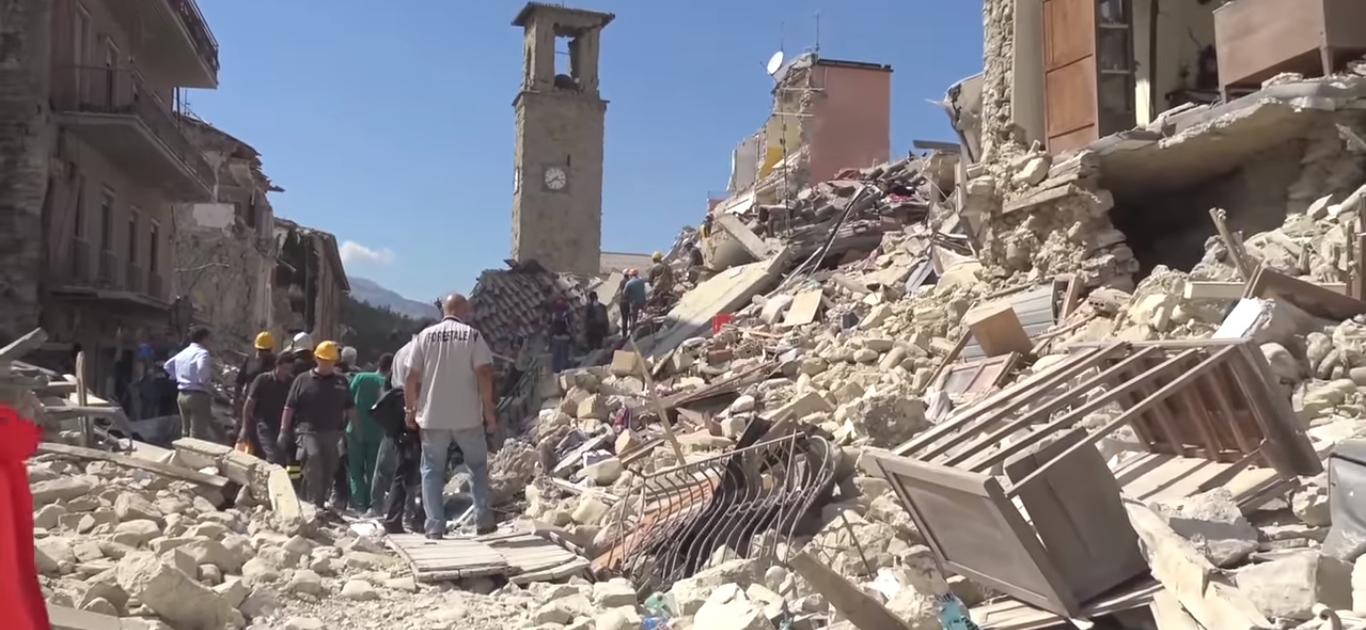The main features of earthquakes
An earthquake is a sudden and sometimes violent movement of the Earth’s crust. Earthquakes occur due to a release of energy that causes the Earth’s crust to move suddenly. On average, the Earth experiences close to 1000 earthquakes each day. As a result of the improvements in communications and the increased interest in natural disasters, the public now learns about earthquakes more quickly than ever before.
The size of an earthquake is reported by the Richter Scale and quantifies (gives a number to) the magnitude (the amount of energy released) by an earthquake.
According to long-term records (since about 1900), we expect about 16 major earthquakes annually. That includes 15 earthquakes in the magnitude 7 range and one magnitude 8.0 or greater earthquake.
Most of the world’s earthquakes occur along the Pacific Ring of Fire. The Pacific Ring of Fire is a horseshoe-shaped zone stretching 40,000 km around the edge of the Pacific Ocean, where 90% of the world’s earthquakes occur.
Earthquakes occur due to the movement of magma within volcanoes and along the edge of tectonic plates, where they slide past, away and towards each other. As tectonic plates move, friction between them causes tectonic plates to get stuck. Over time pressure builds up until the plates move, releasing energy as an earthquake.
The point where tectonic plates slip or rupture within the Earth’s crust is called its focus. Earthquakes with a deep focus tend to occur in subduction zones beneath destructive plate margins. Shallower earthquakes are more likely to happen where tectonic plates move apart or past each other. Shallow earthquakes can be very destructive as the thin crust above them does not absorb their energy, and the released energy reaches the surface quickly.
The epicentre of an earthquake is the point on the Earth’s surface directly above the focus. Earthquake energy is released in seismic waves. These waves spread out from the focus. The waves are felt most strongly at the epicentre, becoming less strong as they travel further away. The most severe damage caused by an earthquake will happen close to the epicentre.
Earthquakes have two major effects on the Earth’s surface – shaking and slipping of the crust. Surface movement can be more than 10 metres in the largest earthquakes. A slip that occurs underwater can lead to the formation of a tsunami.
The strength of an earthquake is recorded using a seismograph. The results are displayed on a seismogram.
As discussed earlier, the moment magnitude and Richter scales provide only an idea of the impact of an earthquake. However, the Mercalli scale can be used to record the extent of physical damage caused by an earthquake. Rates are given as Roman numerals and are a subjective interpretation of the damage caused by an earthquake.
Aftershocks are common after a major earthquake. This is a minor earthquake that occurs as the crust around a fault adjusts to the main shock.
Check your understanding
Features of earthquakes
Related Topics
Use the images below to explore related GeoTopics.



